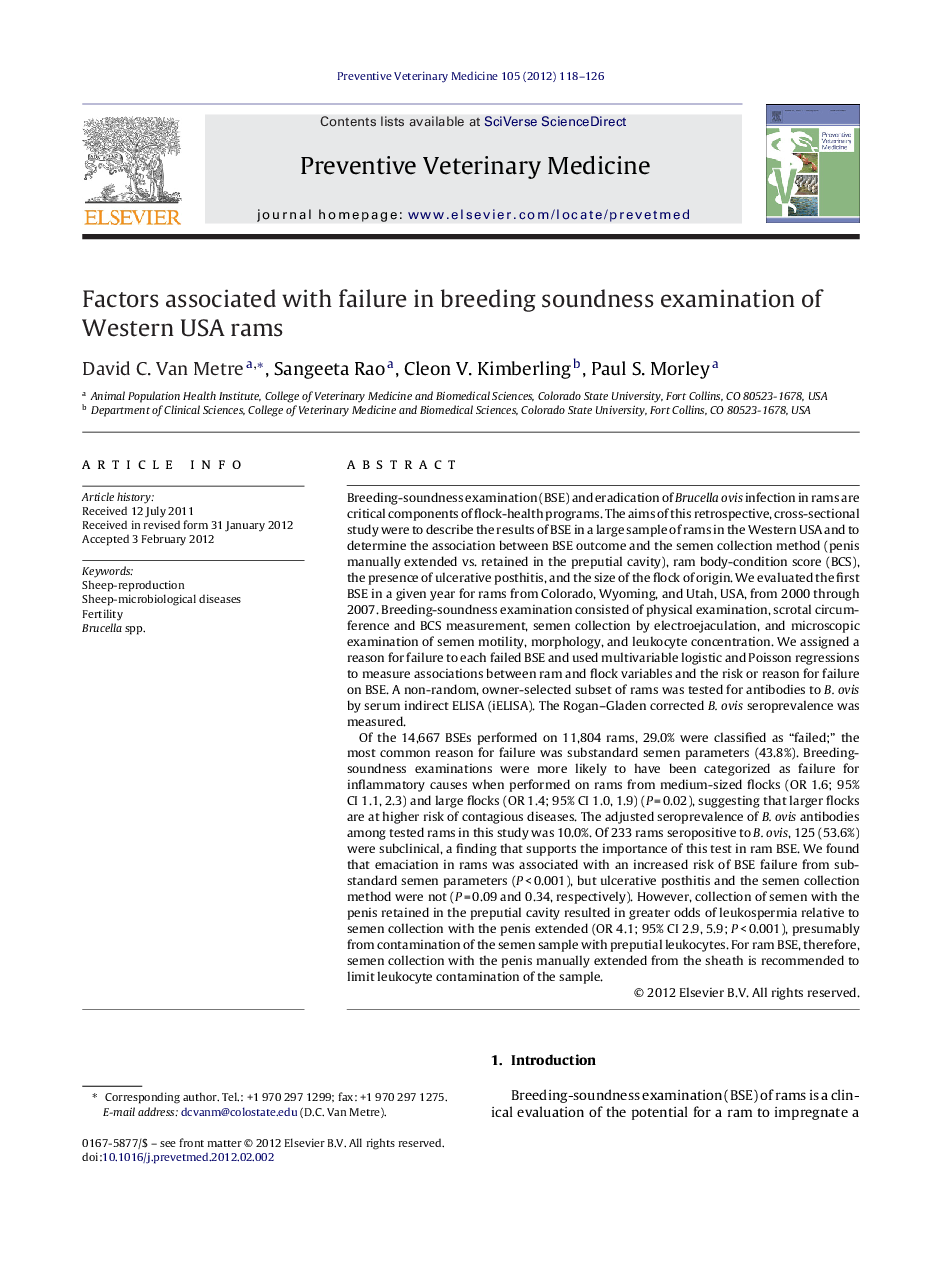| Article ID | Journal | Published Year | Pages | File Type |
|---|---|---|---|---|
| 5794069 | Preventive Veterinary Medicine | 2012 | 9 Pages |
Abstract
Of the 14,667 BSEs performed on 11,804 rams, 29.0% were classified as “failed;” the most common reason for failure was substandard semen parameters (43.8%). Breeding-soundness examinations were more likely to have been categorized as failure for inflammatory causes when performed on rams from medium-sized flocks (OR 1.6; 95% CI 1.1, 2.3) and large flocks (OR 1.4; 95% CI 1.0, 1.9) (PÂ =Â 0.02), suggesting that larger flocks are at higher risk of contagious diseases. The adjusted seroprevalence of B. ovis antibodies among tested rams in this study was 10.0%. Of 233 rams seropositive to B. ovis, 125 (53.6%) were subclinical, a finding that supports the importance of this test in ram BSE. We found that emaciation in rams was associated with an increased risk of BSE failure from substandard semen parameters (PÂ <Â 0.001), but ulcerative posthitis and the semen collection method were not (PÂ =Â 0.09 and 0.34, respectively). However, collection of semen with the penis retained in the preputial cavity resulted in greater odds of leukospermia relative to semen collection with the penis extended (OR 4.1; 95% CI 2.9, 5.9; PÂ <Â 0.001), presumably from contamination of the semen sample with preputial leukocytes. For ram BSE, therefore, semen collection with the penis manually extended from the sheath is recommended to limit leukocyte contamination of the sample.
Related Topics
Life Sciences
Agricultural and Biological Sciences
Animal Science and Zoology
Authors
David C. Van Metre, Sangeeta Rao, Cleon V. Kimberling, Paul S. Morley,
